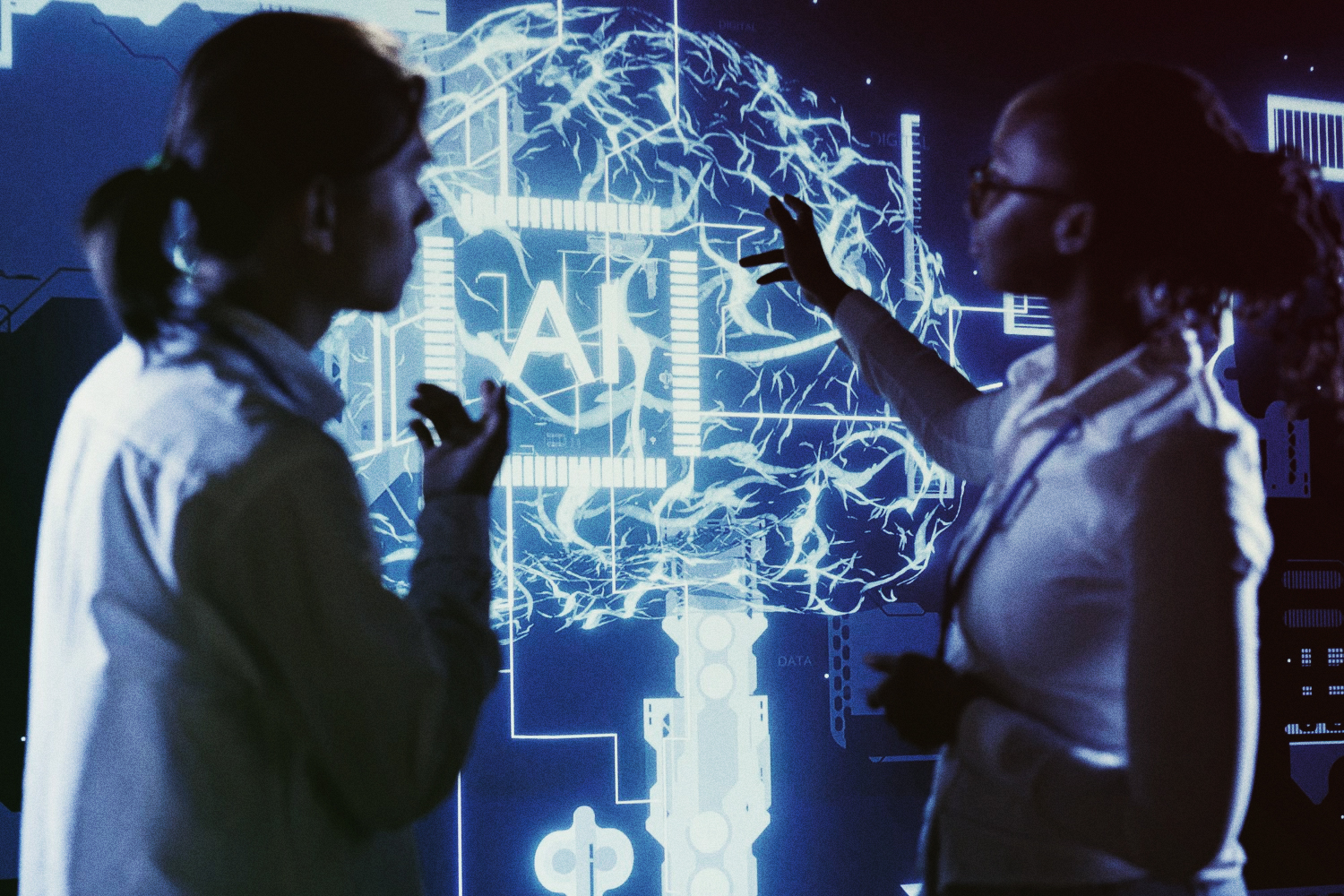Most marketers have shiny object syndrome. We like new things, because new is exciting. New is different. New could be the solution to whatever revenue problem we’re currently grappling with.
But, often, new is a false promise. Most of those shiny objects aren’t worth your time or budget, and take focus away from the fundamentals that matter.
In this article, though, we’ll cover 5 technologies you should know about – and explain how you can implement them into your current marketing strategy.
1. Large Language Models
It’s an understatement to say much has been written about ChatGPT and other large language models (LLMs) over the past 2 years. We won’t retread the same ground here. (If you want to learn how LLMs like ChatGPT work, read this article.) Instead, we’ll talk about two things: LLMs’ utility in marketing – and the risks they present to overenthusiastic businesses.
On one hand, LLMs are a genuinely incredible technology. Feed ChatGPT or Perplexity the most basic of prompts, and you’ll receive a detailed, clearly phrased answer. That means that copywriting and content creation have been democratised. Businesses can quickly churn out synthetic marketing collateral for free and in a fraction of the time required for manual production.
On the other hand, though, that synthetic collateral is produced through prediction. LLMs don’t ‘think’. Their underlying transformer models enable them to interpret nuanced queries and deliver the most likely response based on the data sets they’ve been fed. That means any synthetic collateral is going to be, almost literally, the average of whatever training data a given tool uses.
For certain types of collateral, ‘average’ is enough. But most marketing relies on cut-through – the ability to seize and hold the attention of buyers amid incessant media noise. Average ideas and average technical quality just won’t deliver the results you need. (And keep in mind that your competitors have access to the exact same technology.)
There are also other considerations: hallucinations (particularly relevant for regulated industries like health, finance and law), potential IP infringement, incoming regulation, and the marketing learnings lost by not manually creating collateral.
a. Our Take on LLMs
In their current form, LLMs are useful for creating functional marketing collateral that doesn’t need to meet any specific quality or differentiation standards (like FAQs and basic email campaigns). They’re also useful for giving subject matter experts a way to quickly put their knowledge onto paper and for accelerating marketing ops processes (such as summarising complex information and analysing data sets).
But relying on them to create all your front-facing collateral is dangerous. You’ll end up with copy and content that doesn’t deliver – which takes resources away from the initiatives that will actually move the needle.
2. Generative AI
LLMs are a subset of generative AI, the term used for any technology that produces synthetic content. While LLMs are used for text-based content, other generative AI tools can create images, audio, and even videos – all of which have, historically, been costly for marketing teams.
Popular apps like Photoshop have already integrated generative AI into their editing suites. There are also tools like Visla and Opus Clip that streamline the production process. But true transformative potential really lies in platforms like Synthesia – entirely original video generated from personalised inputs.
While those tools are still in their infancy, they’re already advanced enough to let individual content creators dramatically accelerate video output. As they evolve, we’ll likely see use more cases (like high-production product walkthroughs generated from smartphone videos) that will keep making quality video accessible to more brands.
a. Our Take on Generative AI
Generative AI can streamline existing video and image editing processes, but tools like DALL-E aren’t photorealistic enough (yet) to replace custom photography or even stock images. In some scenarios, synthetic images might be used to add colour to text (for example, on social media or web pages), but it’s more likely that they’ll just add to the noise without providing any additional value for buyers.
Synthetic video shows more potential, especially in scenarios where animation is acceptable (such as explainer videos), but AI tools still have a long way to go before they can become a viable substitute for manual production.
3. Hyper-Personalisation
Our worlds are saturated by marketing. So how, as a brand, can you punch through to actually engage with your ideal buyers? Answer: hyper-personalised collateral. Make something so specific to individuals that they can’t ignore it.
We know that personalisation works. It’s why one-to-one business development still remains a critical marketing tactic, even in a digitally native world. But, historically, truly personalised experiences have been impossible to achieve at scale.
Today, better technology (like website deanonymisation and dynamic landing page customisation) has made it possible. For B2B brands, for example, it’s relatively easy to identify website visitors and serve up pages based on firmographic data like industry, job title, and company size. Those site visitors can then be tracked across their social media accounts through retargeting scripts and served even more closely targeted ads.
That’s one, well-tested personalisation playbook – but new technology is also opening up new possibilities. AI can connect previously discrete data points to form fuller buyer profiles. Revenue intelligence tools can enrich CRM records. More touchpoints – websites, apps, social media – means more data. Modern personalisation is a lot deeper than a ‘first name’ merge tag in your email campaign.
a. Our Take on Hyper-Personalisation
Consumers expect a certain level of personalisation. Exactly how much your brand needs depends on your industry and GTM motion. More complex motions (like ABM) and upstream target markets benefit from more personalisation – and have deal sizes that justify the investment in often pricy revenue intelligence tools.
Data governance is also a major consideration. If you’re collecting user data, make sure you have the ability to properly store and manage it, especially if you’re classed as an APP entity.
4. Augmented and Virtual Reality
Augmented and virtual reality (AR and VR) have been ‘the next big thing’ for a while. (For clarification, AR superimposes CGI onto the real world; VR creates wholly CGI worlds.) They’ve seen some uptake by retailers, but have remained out of reach for most brands thanks to high costs.
Like all new technology, though, price goes down as adoption goes up – and that’s opening up interesting marketing avenues. Meta Spark, for example, is a free platform that makes building AR experiences across the Meta family relatively accessible. (The Metaverse itself is probably the best example of a full VR platform.)
There are also plenty of feasible ways to add AR to real-world people and locations: think lipstick being superimposed onto a user’s face, virtual try-ons of clothes and accessories, or CGI characters providing walkthroughs of real-world locations.
a. Our Take on AR and VR
AR and VR are still very much a marketing experiment – fun to play with, but mostly untested as drivers of revenue. To date, most real-world AR examples are one-off campaigns that rely on the novelty factor of the technology itself.
Does a comparatively costly AR initiative deliver better results than a conventional marketing medium? We don’t know, but there are obvious issues around value addition. Virtual product tests, for example, seem like an easy AR win – but are they actually helpful? AR can’t accurately reflect how a specific foundation looks on your skin, how a piece of clothing fits, or how a car handles. At best, it’s a visual guess.
The other clear challenge is consumer adoption. VR headsets and smart glasses still haven’t really taken off – and many consumers buy them for gaming rather than casual or social use. Any VR experience is likely to be accessible only to a fraction of your target market (if any).
In sum: it’s probably best to hold off on investing in AR or VR until adoption increases and prices go down further, unless you have a very clear use case.
5. Digital Olfaction
Humans are a highly visual species, which is why the vast majority of marketing focuses on text and images. Audio is mostly used in the context of podcasts and mixed media like video.
Our other senses are virtually ignored. How many brands try to engage buyers through mechanical stimuli like touch, pressure or temperature? How often does smell make an appearance in a marketing strategy? (Some sophisticated B2C brands do take non-visual and -auditory aspects into consideration, but they’re few and far between.)
That’s why emerging technologies like digital olfaction are so exciting. Our sense of smell relies on chemoreceptors – specialised cells that detect odorants – and is our most ancient sense. It has a more profound effect on our emotional state and memory formation than vision or sound, which, if harnessed for digital marketing, could radically improve how brands can engage with buyers.
(An easy example: what makes you more likely to buy a burger? A nice photograph plastered on a billboard or a mouthwatering scent drifting to you from a nearby eatery? Both work by stimulating ghrelin, but the latter does so far more effectively than the former.)
Digital olfaction also has positive implications for buyers with visual and auditory impairments. Too often, marketing collateral is developed exclusively for buyers without disability, even though more than 13 million Australians have some form of visual impairment.
a. Our Take on Digital Olfaction
Broadly available digital olfaction technologies aren’t here yet – but they’re coming. And, once they do arrive, they’ll be a greenfield space with almost unlimited potential for fast-moving brands. When you’re developing or revising your marketing strategy, make sure you’re considering all available mediums, not just a handful of tried-and-true digital channels.
(It’s worth noting that marketing will be just one use case. Like AI, digital olfaction will have massive implications for product development and CX as well.)
No One Is an Expert in the Future
The five technologies we’ve discussed in this article are emerging. Yes, some of them have technically existed for years (even decades), but, as marketing tools, they’re newborn. Everyone is experimenting. Everyone is making mistakes. There are no experts on the frontier – just explorers.
And that’s the philosophy you should use to guide your marketing efforts. Look for in-house staff and agencies who are curious, open-minded, and working from marketing first principles. Seek out people who are pragmatic about the next shiny thing – but still take the time to explore and understand its potential through a responsible innovation program.
iOnline, for example, was born in 2000 – the height of the dot-com bubble. We guided our clients from an analogue-native to a digitally native world. We’ve seen countless new marketing technologies emerge, and we’ve successfully leveraged the ones with staying power (like SEO, Google Ads, and social media).
If you need a partner that understands how to adopt new technologies, schedule an obligation-free consultation with us.












